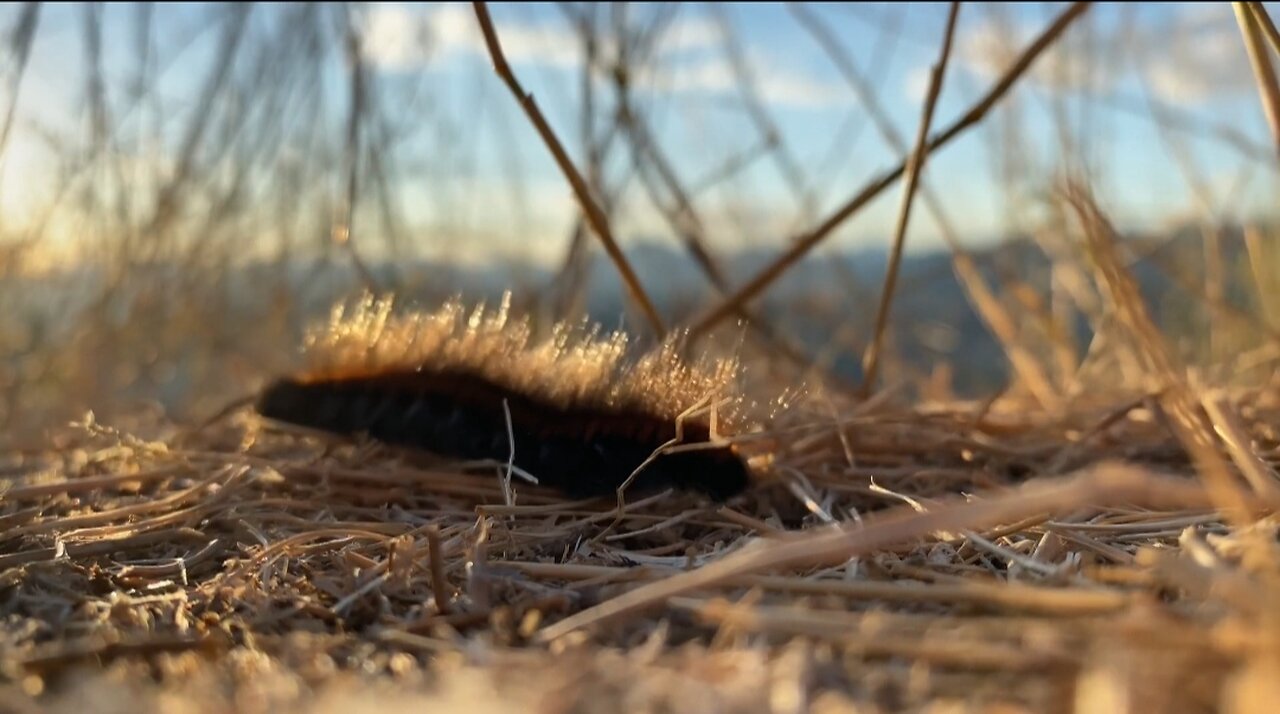Premium Only Content

"Caterpillars: The Silent Garden Keepers"
Caterpillars are the larval stage of butterflies and moths, belonging to the order Lepidoptera. They are often recognized for their elongated, segmented bodies, which are soft and can vary widely in color and pattern. Caterpillars have three pairs of true legs located near their head, and several pairs of fleshy, false legs called prolegs along their abdomen, which help them move in a characteristic crawling motion. Here are some key points about caterpillars: 1. **Diet**: Caterpillars are primarily herbivores, feeding on leaves, flowers, and other plant material. Some species are specific to certain plants, while others are generalists. 2. **Defense Mechanisms**: To protect themselves from predators, caterpillars have developed various defense mechanisms. Some are camouflaged to blend in with their surroundings, while others have bright, warning colors to indicate they are toxic or unpalatable. Some caterpillars have spines, hairs, or other physical structures that can deter predators. 3. **Growth and Molting**: As caterpillars grow, they molt several times, shedding their exoskeletons to accommodate their increasing size. Each stage between molts is called an instar. Most caterpillars go through five instars before they pupate. 4. **Metamorphosis**: The most fascinating aspect of a caterpillar's life is its transformation into a butterfly or moth. After reaching a certain size, the caterpillar forms a pupa, or chrysalis, in which it undergoes metamorphosis. Inside the pupa, the caterpillar's body undergoes a complete transformation, emerging as an adult butterfly or moth. 5. **Role in Ecosystem**: Caterpillars play a crucial role in ecosystems as both herbivores and prey. They help control plant populations and are a vital food source for many animals, including birds, reptiles, and other insects. Caterpillars are often considered pests in agriculture because they can cause significant damage to crops. However, they are also admired for their role in the life cycle of butterflies and moths, which are important pollinators.
-
 25:19
25:19
SB Mowing
1 day agoI had to do a DOUBLE TAKE because I couldn’t see the house at first
53.6K25 -
 2:15:43
2:15:43
I_Came_With_Fire_Podcast
13 hours agoChina's Global Strategy, US Military Challenges, & The Battle for Influence
54.6K8 -
 2:37:42
2:37:42
FreshandFit
17 hours agoGreg Doucette Guessed Their Body Fat Percentages And THIS Happened...
168K118 -
 5:08:30
5:08:30
Akademiks
17 hours agoKendrick Lamar SPEAKS for first time SINCE BEEF in new Interview. Drake preppin new album. YE WYLING
198K28 -
 2:12:17
2:12:17
Tucker Carlson
18 hours agoMike Benz Takes Us Down the USAID Rabbit Hole (It’s Worse Than You Think)
348K1.21K -
 1:47:17
1:47:17
Roseanne Barr
22 hours ago $46.33 earnedThe Most Offensive Comic, Leonarda Jonie | The Roseanne Barr Podcast #86
206K243 -
 51:45
51:45
Talk Nerdy 2 Us
20 hours ago🔥 Talk Nerdy 2 Us – Feb 7th: HACKED, TRACKED & UNDER ATTACK! 🔥
145K9 -
 18:47
18:47
Degenerate Plays
1 day ago $0.25 earnedThey're In Paris And At Freddy's? - Five Nights At Freddy's 4 : Finale
17K1 -
 1:02:09
1:02:09
Trumpet Daily
1 day ago $5.21 earnedThe ‘Dictator’ Who Downsizes Government - Trumpet Daily | Feb. 7, 2025
17.3K34 -
 15:08
15:08
Chris From The 740
19 hours ago $0.57 earnedCan't Afford a Staccato XC? The Match X is the Budget Alternative!
10.8K2